Welcome To The World Of Remote Control Soaring!
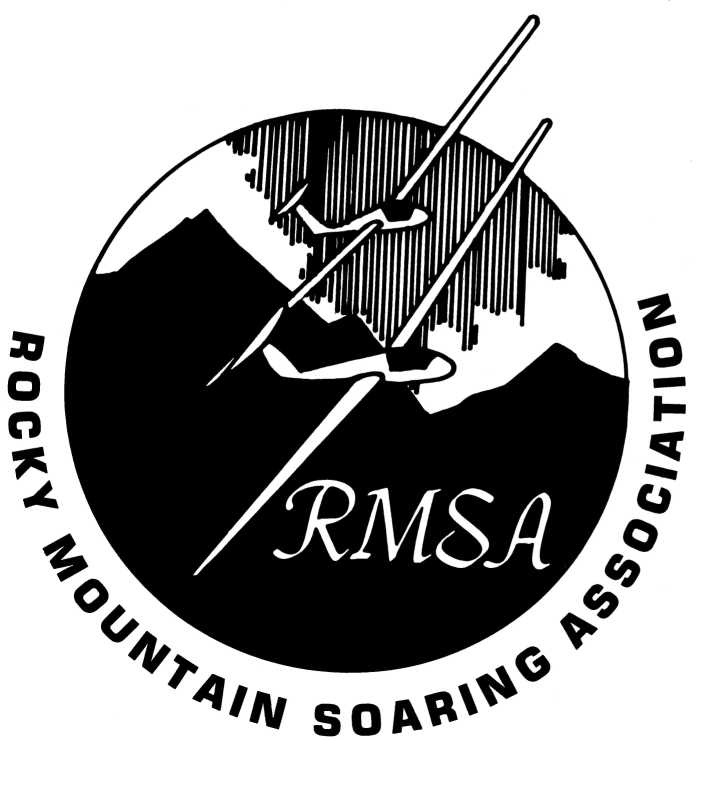
The Rocky Mountain Soaring Association (RMSA) has been Denver's foremost model sailplane club since 1976. We are a A.M.A. chartered club with over 50 members. Among our current and former members we have:
- Skip Miller - R/C Soaring's FIRST World Champion (F3B)
- Mark Howard - U.S. Absolute sailplane altitude record holder (7,717')
- Jack Sasson - A U.S. F3B speed record holder
- Lenny Keer - A U.S. World Champion in model soaring
- and Byron Blakeslee - a noted soaring magazine columnist
A number of our club members have medals from podium finishing US Soaring teams.
We can offer the beginning flier a wealth of information and experience to help make his or her inaugural flight a success. We normally fly at our primary club field - a large sod farm near Barr Lake. Club membership is required to fly at the field unescorted. Current A.M.A. membership is required by ALL pilots. Training sessions are often conducted at the field, weather permitting. Training times may be arranged with any instructor.
For directions to the field, or if you have questions about building, flying, or trimming your sailplane, feel free to contact one of the club members in the contacts section. Club members fly a variety sailplanes, including thermal duration, slope, scale, hand-launch, cross-country along with the international competitions for F3K, F5K, F3B, F5B, F3J and F5J. We have specialists who can assist you with these specific styles of flying. RMSA also conducts competitive events to help promote flying excellence. Events are scheduled monthly during flying season and the calendar is published on this website.
With a large and dispersed membership along the front range, club business is generally conducted via the club email list.
What Kinds of Soaring Are There?
Soaring, the magical use of rising air to defy gravity! There is nothing like catching your first thermal, you will probably stumble into it, it will bounce around and you will be surprised that it is going up not down! You will circle like you were taught, and be captivated by the beauty as it goes round and round. Then, at some point, you will say "Holy cow - I am really high, now I have to get down without blowing the plane up." You will use your spoilers or flaps to make a nice slow descent and land gently at your feet. Your hands stop shaking, and that is it - you are hooked!
That is the begining of a life long passion. Soaring is not just about learning to fly an aircraft, in fact that is the easy part. The challenge is to find that thermal every flight. How to know what the signs of a thermal are, weather patterns, where to fly to increase the odds of hitting that thermal. You will be learning to optimize the way you fly in different kinds of lift. Every day is different - you use your senses to feel the air temperature changes, you notice other things in the air that are clues to thermal activity, you see disturbances in the grass, and changes in the wind direction and speed. All clues as to where to fly to go up.
Some say soaring is like fly fishing, you know the fish are there, but where? What are the clues that lead you to cast one place or another? Those choices are different than they were yesterday and will be different from tomorrow. That is the fun and challenge of soaring - where is that thermal today?
There are all kinds of different soaring disciplines from lazy thermalling with a light floater, for no good reason except the challenge, to the adrenaline filled speed of Dynamic Soaring - topping 400mph. No matter what kind of soaring you are interested in, RMSA likely has members that participate. Many of our members just love to come out to our world class field just for the fun of it. Others are active in our competition events. You should know that competitions are not just for the top guys, but they are the best way for beginners to progress in their skills. Sure you can go out and fly all by yourself and have plenty of fun, but if you want to really improve your skills, attending contests is the best way. Ignore your score and focus on what you can learn from the top pilots. both their advice while you are flying and their performance provides invaluable information on how and where to fly to stay up. We regularly run events that are fun and competitive. Some of the more popular ones that we regularly run are:
- 2 Meter - a popular beginning class that uses affordable polyhedral wood and carbon kits that are guided using only rudder and elevator with a spoiler to control speed and descent. They are launched either with a bungee or an onboard electric motor. These contests harken back to the early days of r/c soaring. Our own Sam Pendleton kits the Tetra, an outstanding model in this class.
- F3K or Discus Launched Gliders - 1.5 meter wingspan planes. We also allow electric powered variants of these models for those unable or limited in their ability to throw the model in a discus type launch.
- F5J Electric Launch- A popular class of competition with models up to 4 meter wingspans launched with an electric motor in the nose.
- F3J - up to 4M span sailplanes using a winch to launch for a thermal duration task
- F3B - very fast winch launched models that compete in speed and distance on a closed course and also duration.
- F5B - a class of very fast electric launched models with powerful motors for a multi-task event
- F3F - racing in slope lift with fast models on a closed 100 meter course, usually in coastal areas with consistent onshore wind
- Scale/Aero Tow - these are models of actual full scale sailplanes towed to altitude by model tow planes just like the full size sport
- DS - Dynamic Soaring which entails flying on a slope and generates great speeds!
- GPS Triangle Racing - these models use GPS based equipment on board the model and on the ground to complete as many laps of a triangle course as possible in an allotted time.
Here is a brief description of the above disciplines:
2M/RES
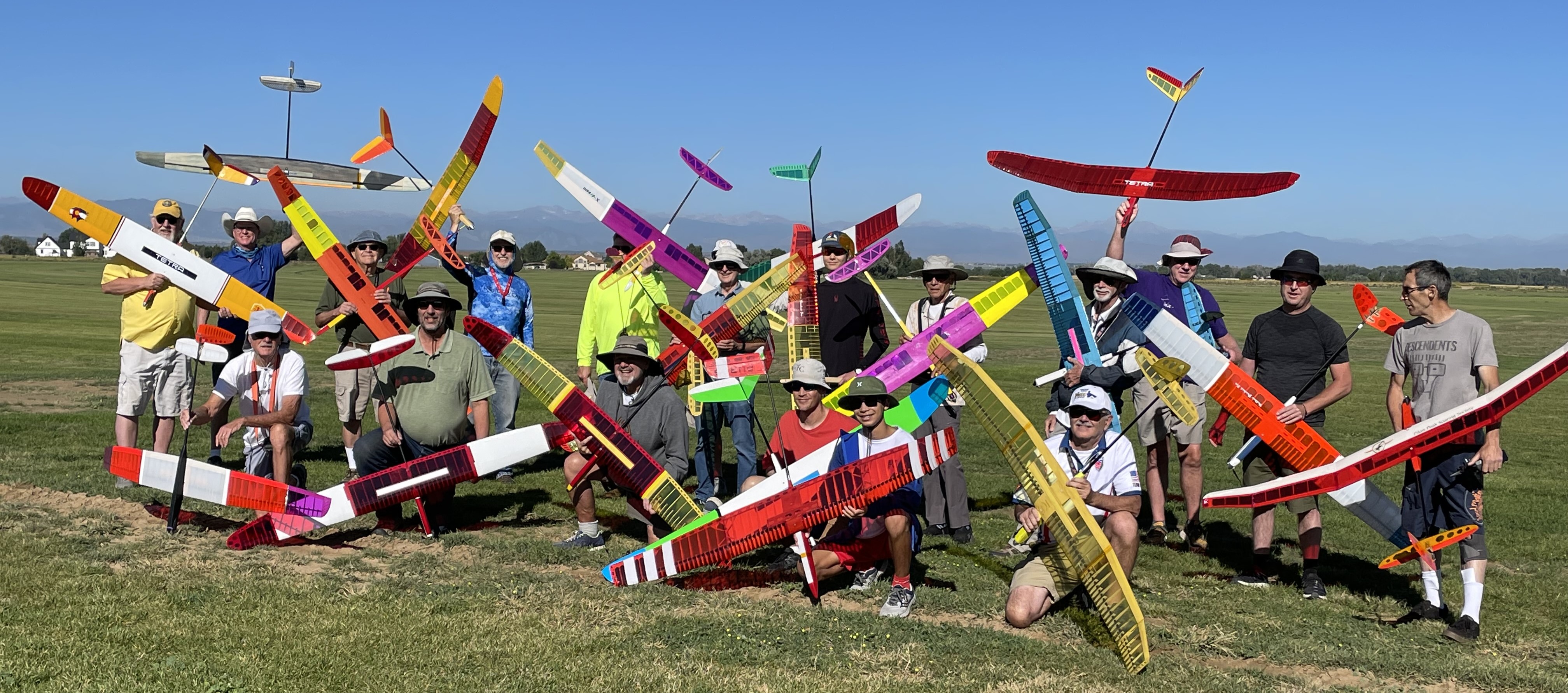 This class encompasses a lot of different names but we call it fun. This is a great starter class, using relatively inexpensive built-up sailplanes.
There are a lot of candidate kits, but not a lot of ready to fly models. If you are a builder there are some excellent kits, including one by one of our members.
Sam Pendleton offers a great, well thoughtout kit that is perfect to get going. If you are not interested in building, your best bet is to find a used model from someone in the
club or one of the modelling sites.
This class encompasses a lot of different names but we call it fun. This is a great starter class, using relatively inexpensive built-up sailplanes.
There are a lot of candidate kits, but not a lot of ready to fly models. If you are a builder there are some excellent kits, including one by one of our members.
Sam Pendleton offers a great, well thoughtout kit that is perfect to get going. If you are not interested in building, your best bet is to find a used model from someone in the
club or one of the modelling sites.
The flying is a lot like a fun fly. The exact rules can change slightly from event to event, but in general the goal is to launch and fly for an organizer determined number of minutes, which sounds easy, but it is not. You accumulate points for every second of flight time and the one with the most points at the end wins. Usually you will fly 2-4 flights per hour and time for others when you are not flying. 8 flights a day is a common goal.
DLG/Handlaunch/F5K
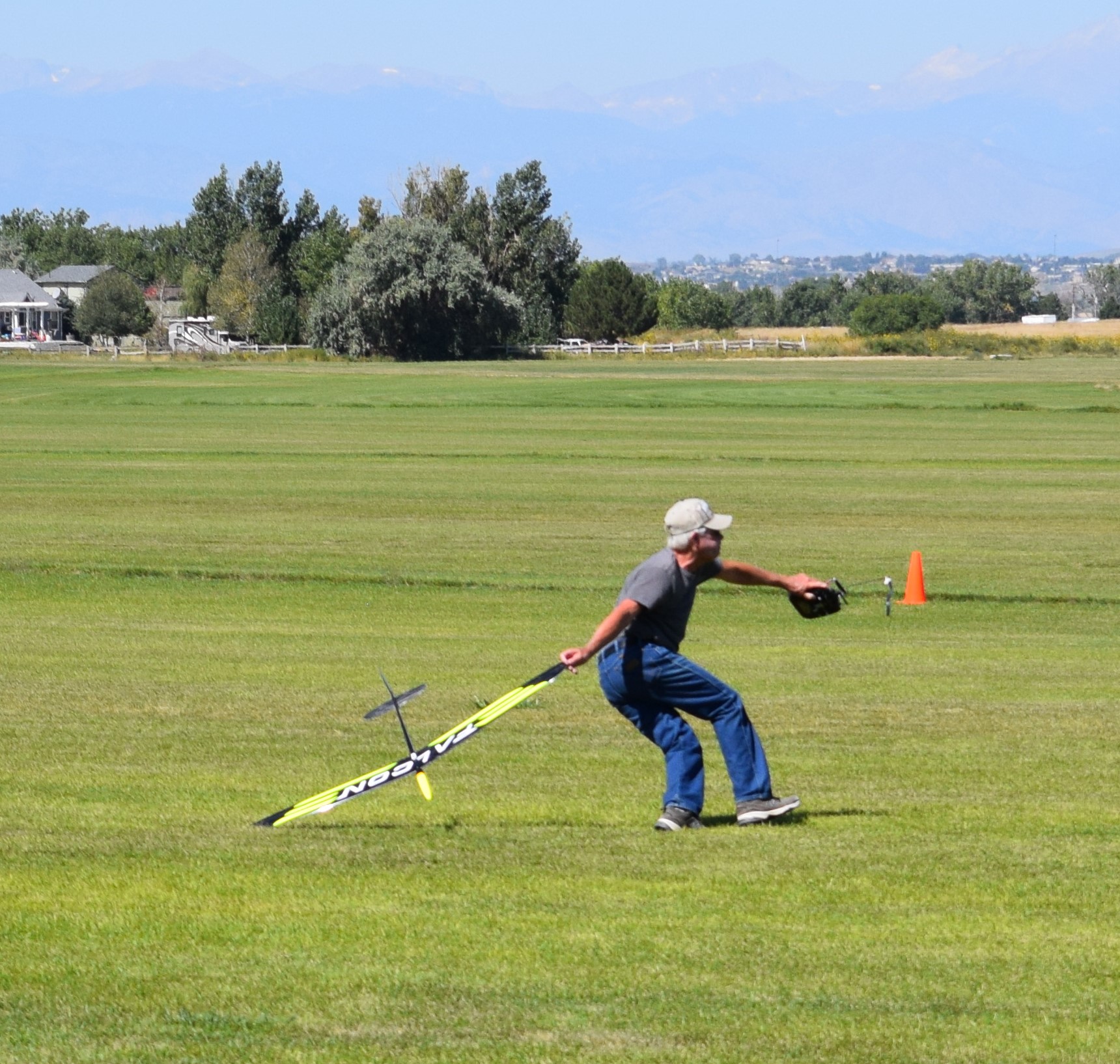 This class is an official international competition format, but is a perfect way to get started in soaring. Some of our members have represented the USA at world championship events.
The sailplanes are smaller and easy to transport,
with a 1.5 meter wingspan. The official way to launch is by grabbing a peg in the wingtip and spinning around to throw it like a discus (aka Discus Launched Glider - DLG).
This takes some practice and a bit of athleticism to be highly competititive, but for fun flying the average joe can launch plenty high to find thermals. Some of us older
pilots have some difficulties with the throw so our club now allows the use of electric launched DLGs. These are the same planes but they have a motor and a device
that limits the launch to a height that is competitive with the good throwers (about 50 meters).
This class is an official international competition format, but is a perfect way to get started in soaring. Some of our members have represented the USA at world championship events.
The sailplanes are smaller and easy to transport,
with a 1.5 meter wingspan. The official way to launch is by grabbing a peg in the wingtip and spinning around to throw it like a discus (aka Discus Launched Glider - DLG).
This takes some practice and a bit of athleticism to be highly competititive, but for fun flying the average joe can launch plenty high to find thermals. Some of us older
pilots have some difficulties with the throw so our club now allows the use of electric launched DLGs. These are the same planes but they have a motor and a device
that limits the launch to a height that is competitive with the good throwers (about 50 meters).
You learn a lot about thermals and flying with DLG class planes. They are typically a bit more expensive than the 2M class as they are generally manufactured for lighter weight and strength using carbon fiber and other Materials. Beginners are likely best off purchasing a used model in this class as there are plenty available and the prices are affordable.
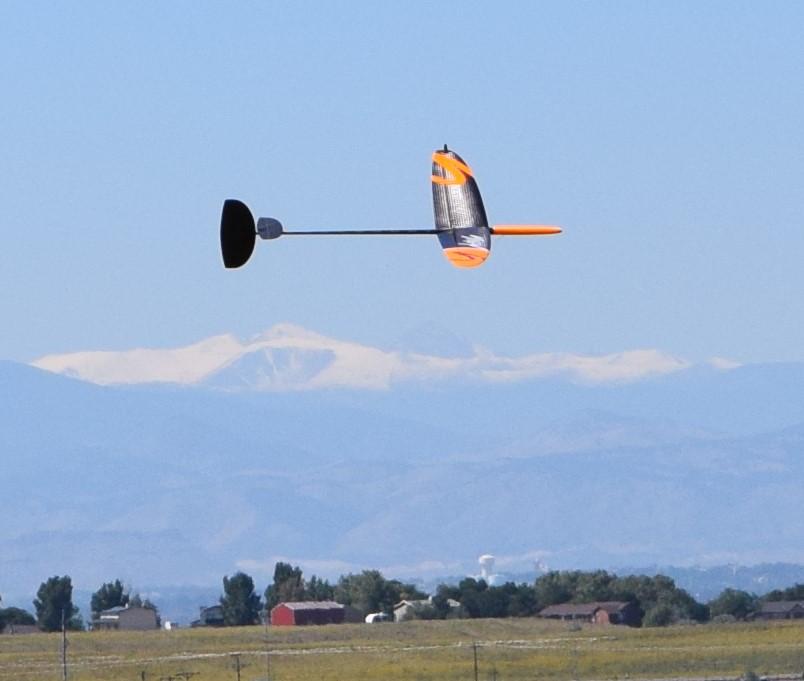
In competitions pilots fly a variety of tasks as determined by the organizer for the day. Some simple task examples are: 1) 2 five minute flights in a 10 minute window 2) In a ten minute window fly 5 flights of 1, 2, 3 and 4 minutes in 10 minutes (any order). Scoring is generally 1 point per second of flight time. Pilots fly in groups and the pilot with the most points wins the group. The points are then normalized with the winning pilot getting 1000 points and the rest of the pilots get their percentage of the pilots score. So, for example, if the winning pilot gets 500 seconds and the next best pilot gets 250 seconds, then the winning pilot gets 1000 and the other pilot gets 500 (because they got 1/2 of the winning pilots points.
We fly competitions every month from March to November weather permitting. Beginners are encouraged to participate where they can fly with more experienced pilots which helps the learning curve a lot.
F5J
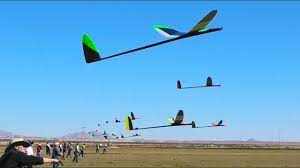 F5J is a class for the bigger sailplanes - generally 3.5 to 4 meters
in span. They are launched using a motor. Made using the latest
technology in construction and materials, these planes can come in
at under 40 oz for a 4 meter span. They are the ultimate soaring
machines. You will want to be proficient in controlling an R/C
aircraft before moving into this class but once you can safely
control and land, these are really fun planes to fly. Physics tells
us that bigger flys better and it is true, and the performance of
these planes is incredible. You can fly further away searching
for lift and flying in the wind is much easier than the smaller
planes. Some of the best pilots in the country are in RMSA and fly
this class regularly. Often several members will attend out of town
events together as well.
F5J is a class for the bigger sailplanes - generally 3.5 to 4 meters
in span. They are launched using a motor. Made using the latest
technology in construction and materials, these planes can come in
at under 40 oz for a 4 meter span. They are the ultimate soaring
machines. You will want to be proficient in controlling an R/C
aircraft before moving into this class but once you can safely
control and land, these are really fun planes to fly. Physics tells
us that bigger flys better and it is true, and the performance of
these planes is incredible. You can fly further away searching
for lift and flying in the wind is much easier than the smaller
planes. Some of the best pilots in the country are in RMSA and fly
this class regularly. Often several members will attend out of town
events together as well.
The overview of the rules are pretty simple: in a ten minute window you must launch with the motor, run the motor for no more than 30 seconds, then try to find lift to sustain you for the rest of the 10 minutes. You then land before the 10 minute window expires with bonus points for landing closest to a landing spot. The kicker is that you are penalized for the height you launch to, so you want to launch as low as you can and still get your full time. There is a device in the plane to measure your launch height and that is used to compute your point penalty. You get 50 bonus points for landing within 1 meter of the landing spot before the window is over.
Again, scoring is generally 1 point per second of flight time plus landing bonus minus height penalty. Pilots fly in groups and the pilot with the most points wins the group. The points are then normalized with the winning pilot getting 1000 points and the rest of the pilots get their percentage of the pilots score. So, for example, if the winning pilot earns 500 points and the next best pilot gets 250 points, then the winning pilot gets 1000 and the other pilot gets 500 (because they got 1/2 of the winning pilots points.
F3B
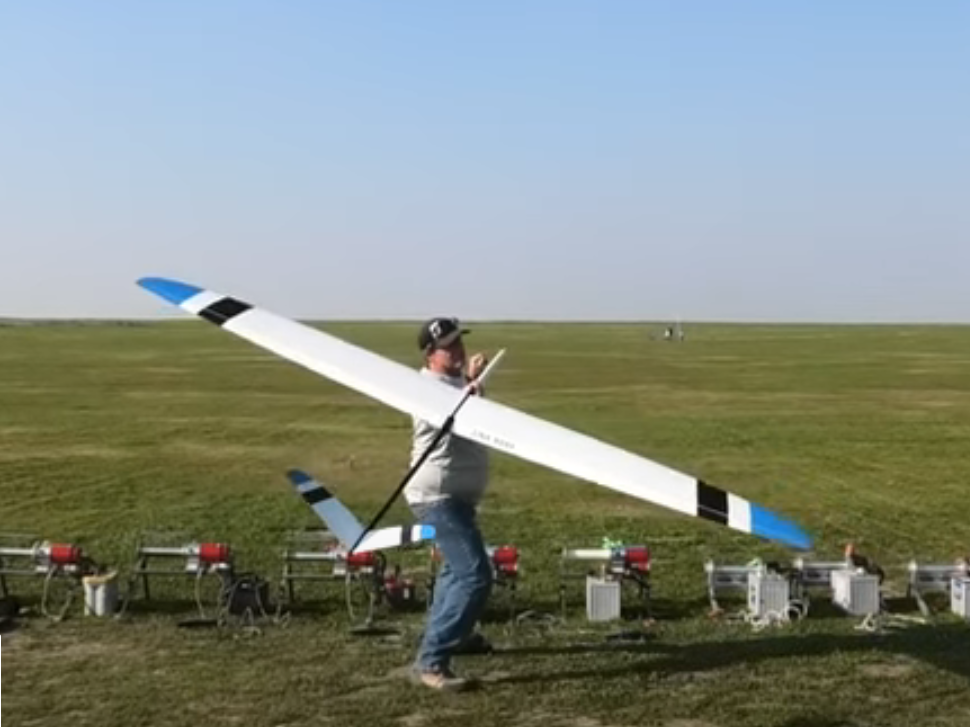
F3B as a multi task event was born in the mid 70’s to take normal thermal duration models to a new and substantial achievement level. This was the first soaring event of its kind to be developed and embraced at the World Championship (Global) level .
The 3 tasks are: speed on a 150 meter 1 sided course , distance on a 150 meter, parallel to infinity course , and simple duration with a spot landing creating the first multitask sailplane event. Launching was by regulated hand tow, bungee, or winch. The excitement world wide was huge , with over 450 US participants competing to make the first 3 pilot USA team selected to compete in the first World Championship in Pretoria South Africa. In any developing technology, often times the human aspect of supporting the technology makes it difficult to keep the inertia and F3B participation has declined over the past 45 years in the USA.
The number of pilots who have the skills and tenacity to compete at a World Championship level today has shrunk unfortunately to less than 20 participants in the USA today… yes these are very complex machines requiring a very organized team approach to function efficiently.
Still, F3B was the development step that led to all of the amazing composite aircraft we all enjoy in all the venues today…. go fast , go far, and stay up long…. that’s what F3B has contributed to the art of RC Soaring. A very exciting and historic time in the invisible world of RC Soaring and still flown in pockets around the USA today.
Here is a brief tutorial video on F3B:
F3B Tutorial
F5B
F5b is a type of radio control electric model aircraft contest that consists of doing as many laps as possible between 2 poles 150 meters apart in 200 seconds followed by 10 minutes of thermalling, and then landing on a 30-meter landing circle. The laps must be made while gliding only, no motor allowed, so the motor is used to rapidly climb and power into the course.
There is a limit of 10 climbs, so to get more than 20 laps (a complete circuit- to the far pole & back- is 2 laps) the plane must climb high and glide 4 laps. To score more than 40 laps, the plane must glide a combination of 4 laps sets and 6 lap sets.
F3F - Slope Racing
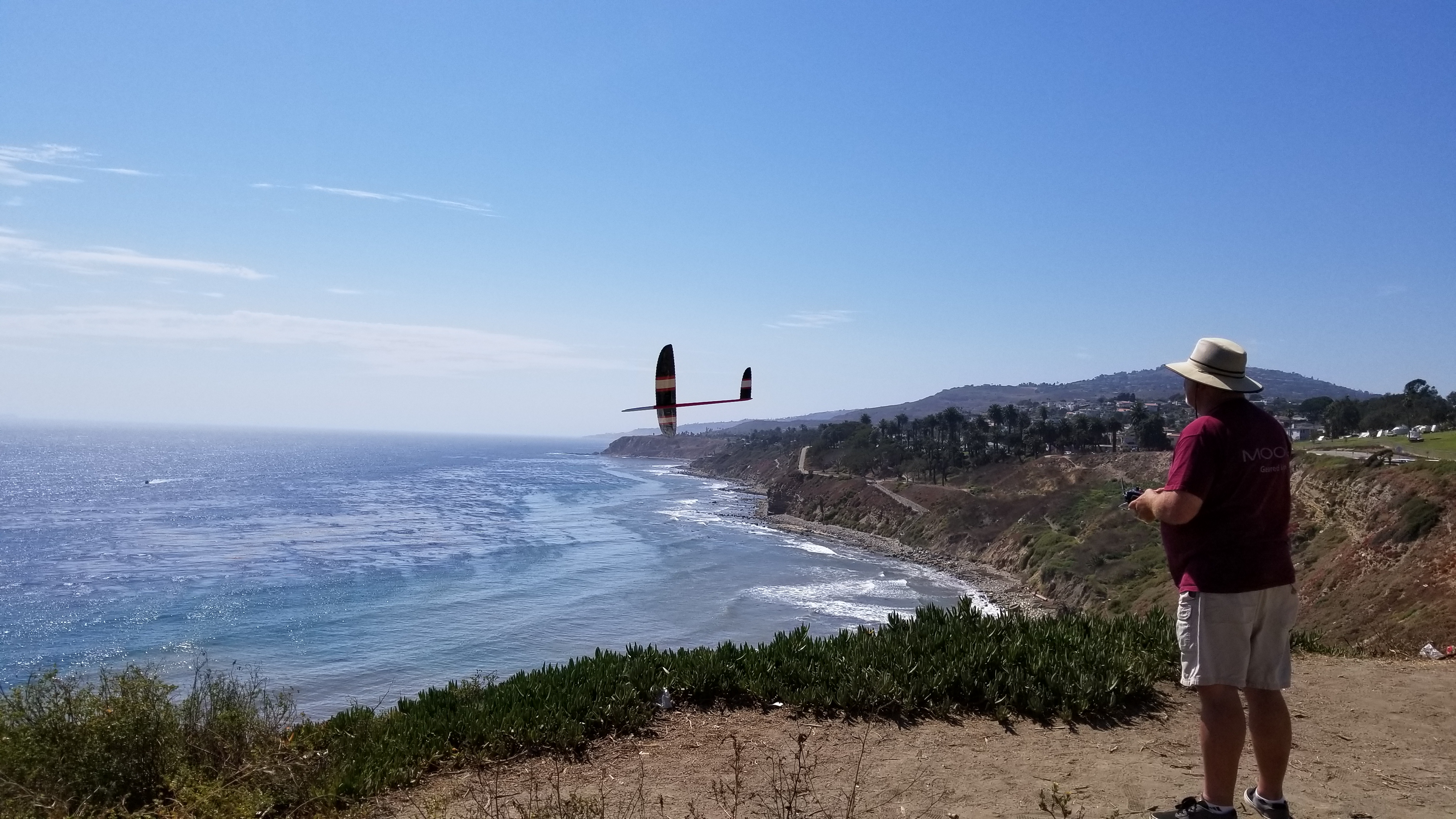 Slope racing with a glider is a speed thing. 10 laps of 100 meter course as fast as you can. Despite having lots of mountains, Colorado is not known for any good
slope racing sites. Generally slope racing is done along the sea coasts where the sea winds provide fairly predictable lift for racing. Some of our members regularly
travel to the coasts to participate in this adenaline event. For more details see the following link: Slope Racing.
Slope racing with a glider is a speed thing. 10 laps of 100 meter course as fast as you can. Despite having lots of mountains, Colorado is not known for any good
slope racing sites. Generally slope racing is done along the sea coasts where the sea winds provide fairly predictable lift for racing. Some of our members regularly
travel to the coasts to participate in this adenaline event. For more details see the following link: Slope Racing.
DS
Dynamic soaring is a flying technique used to gain energy by repeatedly crossing the boundary between air masses of different velocity. Such zones of wind gradient are generally found close to obstacles and close to the surface, so the technique is mainly of use to birds and operators of radio-controlled gliders, but glider pilots are sometimes able to soar dynamically in meteorological wind shears at higher altitudes.
Dynamic soaring is sometimes confused with slope soaring which is a technique for achieving elevation.
Basic mechanism While different flight patterns can be employed in dynamic soaring, the simplest is a closed loop across the shear layer between two airmasses in relative movement, e.g. stationary air in a valley, and a layer of wind above the valley. The gain in speed can be explained in terms of airspeed and groundspeed:
- As the glider begins the loop, say in a stationary airmass, groundspeed and airspeed are the same.
- The glider enters the moving airmass nearly head-on, which increases the glider's airspeed.
- The glider then turns 180°, where it is able to maintain most of its airspeed due to momentum. This must happen immediately, or groundspeed will be lost. The glider's groundspeed, first crosswind, then downwind, as it turns, is now higher, as the tailwind has accelerated the glider.
- The loop continues with the glider re-entering the stationary airmass and turning around, maintaining the now higher airspeed and groundspeed.
- Each cycle results in higher speeds, up to a point where drag prevents additional increase.
GPS Triangle Racing
So, what is GPS Triangle? It consists of a task that is defined by a triangle where the turn points are located 500m 90 degrees to the right (referred to as TP1) of where the pilots stand, 500m in front of the pilots (TP2) and 500m to the left (TP3). The starting gate is an imaginary line between TP2 and the pilots. Racers must cross the start gate lower than 500m altitude and less than 120km/h, then do as many laps as possible in 30 minutes. Energy management is key between being conservative and keeping altitude and being audacious to optimize the number of laps while still looking for thermals. During a competition, ‘working time’ (generally speaking 15 minutes) is defined as time in which you have to launch up and cross the start gate.There is very specialized equipment that is used to collect and transmit data to the pilot, including speed, and location on the course. This is very similar to the way that full-scale racing is sometimes done.
RMSA 2024 Event Calendar
| Date | Event | Location |
| Sunday, March 10 | Season Opening Practice Day | Club Field - 20355 E 120th Ave, Commerce City, CO 80022 |
| Saturday, March 23 | F3K Hand Launch Sailplane Contest | Club Field - 20355 E 120th Ave, Commerce City, CO 80022 |
| Saturday, March 30 | F5J Electric Sailplane Contest | Club Field - 20355 E 120th Ave, Commerce City, CO 80022 |
| Sunday, April 14 | F3K Hand Launch Sailplane Contest | Club Field - 20355 E 120th Ave, Commerce City, CO 80022 |
| Saturday, April 20 | 2M-RES Built-Up Sailplane Contest | Club Field - 20355 E 120th Ave, Commerce City, CO 80022 |
| Sunday, April 21 | F5J Electric Sailplane Contest | Club Field - 20355 E 120th Ave, Commerce City, CO 80022 |
| Saturday, May 11 | F3K Hand Launch Sailplane Contest | Club Field - 20355 E 120th Ave, Commerce City, CO 80022 |
| Saturday, May 18 | 2M-RES Built-Up Sailplane Contest | Club Field - 20355 E 120th Ave, Commerce City, CO 80022 |
| Sunday, May 19 | F5J Electric Sailplane Contest | Club Field - 20355 E 120th Ave, Commerce City, CO 80022 |
| Saturday, May 25 thru Monday, May 27 | Aero Tow Fun Fly - TBD | Club Field - 20355 E 120th Ave, Commerce City, CO 80022 |
| Saturday, June 08 | F3K Hand Launch Sailplane Contest | Club Field - 20355 E 120th Ave, Commerce City, CO 80022 |
| Saturday, June 15 thru Sunday, June 16 | F5J in the Rockies National Contest | Club Field - 20355 E 120th Ave, Commerce City, CO 80022 |
| Saturday, June 22 | 2M-RES Built-Up Sailplane Contest | Club Field - 20355 E 120th Ave, Commerce City, CO 80022 |
| Sunday, June 23 | USA F5B Team Practice - Fun to watch Go Fasts! | Club Field - 20355 E 120th Ave, Commerce City, CO 80022 |
| Sunday, July 07 | F3K Hand Launch Sailplane Contest | Club Field - 20355 E 120th Ave, Commerce City, CO 80022 |
| Saturday, July 13 | F5J Electric Sailplane Contest | Club Field - 20355 E 120th Ave, Commerce City, CO 80022 |
| Wednesday, July 17 thru Friday, July 19 | NATS F3H/XC | Monroe Central School Muncie IN |
| Saturday, July 20 | 2M-RES Built-Up Sailplane Contest | Club Field - 20355 E 120th Ave, Commerce City, CO 80022 |
| Saturday, July 20 thru Sunday, July 21 | NATS Unlimited | AMA Site 5 Muncie IN |
| Monday, July 22 thru Tuesday, July 23 | NATS F3RES | AMA Site 5 Muncie IN |
| Wednesday, July 24 thru Thursday, July 25 | NATS ALES & F3K | AMA Site 5 Muncie IN |
| Friday, July 26 thru Sunday, July 28 | NATS F5J & TS | AMA Site 5 Muncie IN |
| Sunday, August 11 | F5J Electric Sailplane Contest | Club Field - 20355 E 120th Ave, Commerce City, CO 80022 |
| Saturday, August 17 | F3K Hand Launch Sailplane Contest | Club Field - 20355 E 120th Ave, Commerce City, CO 80022 |
| Saturday, August 24 | 2M-RES Built-Up Sailplane Contest | Club Field - 20355 E 120th Ave, Commerce City, CO 80022 |
| Sunday, September 08 | F5J Electric Sailplane Contest | Club Field - 20355 E 120th Ave, Commerce City, CO 80022 |
| Saturday, September 14 | RMSA/PPSS 2M-RES Challenge Cup | Club Field - 20355 E 120th Ave, Commerce City, CO 80022 |
| Saturday, September 21 | F3K Hand Launch Sailplane Contest | Club Field - 20355 E 120th Ave, Commerce City, CO 80022 |
| Saturday, October 12 | 2M-RES Built-Up Sailplane Contest | Club Field - 20355 E 120th Ave, Commerce City, CO 80022 |
| Sunday, October 13 | F5J Electric Sailplane Contest | Club Field - 20355 E 120th Ave, Commerce City, CO 80022 |
| Saturday, October 19 | F3K Hand Launch Sailplane Contest | Club Field - 20355 E 120th Ave, Commerce City, CO 80022 |
| Saturday, October 26 thru Sunday, October 27 | F5J in the Desert Sailplane Contest | Maricopa AZ |
| Saturday, November 02 | 2M-RES Built-Up Sailplane Contest | Club Field - 20355 E 120th Ave, Commerce City, CO 80022 |
| Saturday, November 09 | F3K Hand Launch Sailplane Contest | Club Field - 20355 E 120th Ave, Commerce City, CO 80022 |
| Sunday, November 10 | F5J Electric Sailplane Contest | Club Field - 20355 E 120th Ave, Commerce City, CO 80022 |
| Saturday, January 11 | RMSA Awards Banquet - Tenative | 11:00AM TBD, Commerce City |
Getting Started in Remote Control Soaring!
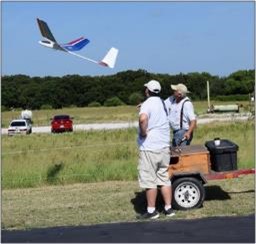 Model aviation presents the RC hobbyist with many satisfying options including scale, pattern, racing and soaring. Soaring’s niche is that it offers a unique connection between flyer, sailplane and the surrounding environment. RC sailplanes are the most graceful flyers in model aviation. Every flight is unique and challenges the pilot to identify and wring out the most performance available. On the next flight, conditions have changed and the pilot must determine how to adjust to take advantage of it. With experience the flyer learns to read what the model is saying, wind shifts and subtle temperature changes while observing soaring birds, lift/sink indicators and other sailplanes. It’s relaxing and rewarding but never boring or repetitive.
Model aviation presents the RC hobbyist with many satisfying options including scale, pattern, racing and soaring. Soaring’s niche is that it offers a unique connection between flyer, sailplane and the surrounding environment. RC sailplanes are the most graceful flyers in model aviation. Every flight is unique and challenges the pilot to identify and wring out the most performance available. On the next flight, conditions have changed and the pilot must determine how to adjust to take advantage of it. With experience the flyer learns to read what the model is saying, wind shifts and subtle temperature changes while observing soaring birds, lift/sink indicators and other sailplanes. It’s relaxing and rewarding but never boring or repetitive.
What do I need to get started?
All you need is the desire to fly; you don't even need a sailplane. If you call an RMSA instructor, we'll make arrangements to meet and you can fly one of our club trainers. If you decide you want to continue, you'll want a plane of your own. You will also need a radio. Most modern sailplanes are launched with an electric motor or by hand but many flyers still use a rubber hi-start. All are simple and efficient methods to get to altitude and start looking for thermals.
Why sailplanes?
If you’ve never flown RC, sailplanes provide an excellent way to learn. The easier your first plane is to fly, the more likely it is that you'll keep it intact through your basic flight instruction. You may also have a more enjoyable experience because you'll be more relaxed (so will your instructor!). Trainer sailplanes have only two controls as opposed to most powered trainer airplanes which have four. Trainer sailplanes fly much more slowly than powered planes giving the student time to react. You don't have to learn how to taxi a sailplane and you can land a sailplane safely anywhere on the field. With your sailplane, you will learn all the important lessons of flight; including the most important - visual orientation. Disorientation is one of the leading causes of RC accidents. You stand a much better chance of clearing the initial disorientation hurdle with a slow, stable sailplane. Sailplanes don't have the noise nor the mess of fuel and cleaners. Once you master the basics of flight, you can easily transition to other types of models if desired.
How do you launch a sailplane?
There are many methods, but the two most popular methods are the electric motor and hand launch - yes, hand launch. Hand launched models are typically 1.5 meters in wingspan and have a peg in the tip of one wing. The pilot grabs the peg, spins around, and releases the plane during the spin. Top pilots can launch over 300 feet, but more typical launches are 150 to 200 feet.
Most modern, larger sailplanes are designed for electric launch. Typically sailplanes use small batteries and its motor is run only for a few seconds (up to 30) in order to get to altitude. With electric launched sailplanes you only need to bring extra batteries and a charger to the field.
Other methods include hi-start and winch launches. A hi-start is simply a length of rubber tubing attached to a length of cord, such as fishing line. One end of the rubber tubing is tied to a stake driven into the ground, the other to the cord. A parachute and ring are attached to the free end of the cord. The ring is slipped onto a towhook on the belly of the sailplane. The pilot walks away from the staked end to stretch the rubber. When the line has enough tension the pilot releases the sailplane which climbs steeply to launch altitude. The ring falls away from the sailplane at the top of the launch and the parachute slowly returns the ring and line to earth. Hi-start launches are a graceful affair, silently lifting a sailplane into the air. Hi-Start or bungie launching is common for smaller planes.
Electric winches are more commonly used by experienced pilots for heavier ships and higher launches. The winch is simply an electric motor with a big metal spool attached to its shaft. Line reels off the spool through a turn-around pulley several hundred yards away, and back to the pilot. The winch is controlled by a foot switch connecting a battery to the motor. Winch launches can be exciting, as expert pilots can launch their ships to well over 600 ft. high!
Winch launching is becoming rare these days as it takes a lot of time and effort to set them up correctly. Popping a rechargeable battery into an electric powered model is a lot simpler.
Sailplanes don't stay up very long do they? How can I learn to fly in such a short time?
A typical 2-meter sailplane typically launches over 200 feet. This is plenty of altitude to allow mistakes and provide for several minutes of flight time. You'll learn why sailplanes are different from gliders as soon as you or your instructor finds a thermal of rising air for you. This is when you'll experience the magic of soaring, as your craft rises higher and higher into the sky. On a good day, it is not unusual for a student to have flights lasting twenty minutes or longer. Master flyers sometimes fly for an hour or more.
How long does it take to learn?
Some exceptional people can learn to fly a simple two channel plane in an afternoon. Others require a few outings before they're ready to "solo". Learning to "fly" the model is the easy part. Making the sailplane go where you want it to is not a difficult task, however, a true mastery of RC soaring can take years to achieve. The real skill is learning how to find and fly in thermals and stay up as long as you wish. Most pilots never stop learning - understanding the air, and the signs of thermals is a lifelong endeavor. In any event, don't rush the experience. Soaring skills mature given time and practice. Flying with other skilled pilots really helps the learning curve.
Can I learn without crashing?
Definitely! With an instructor, odds are that you'll keep your first sailplane
until you wear it out, or you move on to something more advanced. RMSA
instructors are the best, with many years of flying experience. You can improve
your odds even more by using a "buddy box", where a cord connects your radio to
your instructor's. The instructor can "take over" by flipping a switch, making
crashes very unlikely. To use this method, you need to make sure that your
instructor's radio is compatible with yours, and they both support this feature.
Another good tip is to get and use an R/C flight simulator. It can be very helpful in overcoming the control reversal syndrome that kills a lot of airplanes for beginners. This happens when the airplane is flying towards you. In this orientation the controls are the reverse of what your eyes tell you. A couple of tips on avoiding this: 1) when flying at yourself and a wing dips, push the stick towards the LOW wing gently. This will return the plane to level flight. Another tip is to turn and face the same way the plane is flying, watching the plane by looking over your shoulder. Then move the sticks like you are ing the cockpit. Using a flight sim and practicing landings toward yourself over and over can speed up your ability to avoid control reversals.
What kind of sailplane is best?
This depends on your starting skill set. If you come to soaring as a experienced R/C pilot from another discipline then you can likely step right into a higher performance soaring machine. In this case a lot depends on your budget and soaring goals. There are a large number of sailplanes that can be used for recreational/personal flying. Bigger is better for sailplanes, they are typically easier to fly and easier to see. If competition is a goal then a good approach is to look for a used competition plane. There are always used sailplanes available through the social media groups and sometimes from club members. Most flyers start out with a simple 2-channel (rudder/elevator) plane. A great way to start is with hand launched gliders. They are small (1.5m), easy to transport, easy to launch and will teach you a great deal about flying and thermaling. They typically fly slowly and are easy to control.If you go with a larger rudder/elevator plane consider getting an electric launch version as they simplify the launching process. Larger sailplanes are actually easier to learn on. They’re more stable and easier to see. A list of popular sailplanes for novice pilots is included at the end of this section.
Where can I get a plane?
There are many ways to get your first sailplane. You can build one from a kit or assemble an ARF (Almost-Ready-To-Fly). You could also purchase one ready-built. If you have the time, patience, and skills it’s rewarding to build your own plane from a kit. Your local hobby shop may offer kits or ARFs but today more options are available on line. You'll get the advice you need at the hobby shop for glues, covering, radio equipment, etc. If you have questions, feel free to ask an RMSA instructor. We love to talk sailplanes, and we've probably already built the model you've chosen. If you want one ready-built, you have several options:- Hobby shops may have planes on display that are either on consignment or for sale by the owner.
- Look for ads in our club communications. You can even post wanted ads to see if someone has something in the hangar they would part with.
- Swap Meets – Some clubs host auctions or swap meets. The Jefco Aeromodelers hold one of the largest auctions in the country around the second weekend in February every year. The Longmont club has a spring and a fall auction. You can get a really good buy at an auction although it’s also easy to get taken. If you attend an auction, get there early and inspect every item you plan to bid on. Know the value of the items. Many items have been sold for more than their new price in bidding frenzies. If you are new to R/C, try to get an experienced modeler to coach you in your bidding. You can usually get a nice, completed model for about the same cost as the kit.
- Electronic Forums such as RC Groups have sections devoted to RC, RC soaring, and RC for-sale items.
What kind of radio do I need?
We are blessed with excellent radios today. They operate on 2.4 GHz, and effectively, an unlimited number of models can be flown simultaneously*. Also keep in mind that these radios are made for either air or surface use – not both. Don’t install a radio in an aircraft that’s intended for cars and trucks.Today transmitters run from under $200 to over $2000 apiece. Most of them can be programmed to operate dozens of your models. You’ll want a transmitter with at least four channels but more channels will provide you with future growth capability. A four-channel transmitter can control four functions on a model. For example, depending on the model, that might include rudder, elevator, ailerons and motor. If you’re new to RC and buying your first radio system this is a good point to talk with an experienced sailplane modeler for some sound advice.
The Spektrum DX6e is an example of a good first transmitter ($285 w/ lithium ion battery pack). Along with that you’ll need a receiver, servos and airborne battery pack. Selection of those items depends on the sailplane you’ve chosen.
*Note that cheap, used, 72 MHz radios can be found on line and at swap meets. They may still work and can be legally operated but it’s best to avoid them. They’re much more prone to interference and if two flyers are operating them on the same frequency simultaneously their models will go out of control and crash. Modern, 2.4 GHz radios don’t share that feature.
After I've learned the basics - then what?
You'll want to develop a feel for "reading the air" and finding lift. Books have been written on this topic, but they are no substitute for stick time. You'll challenge yourself to stay up longer and develop your landing skills. Soon, you'll be performing smooth aerobatics, rolls and loops. You may want to test your skills in competition - RMSA sponsors numerous thermal/duration contests each season. You will probably want to try more complex designs with ailerons, spoilers, or flaps. Some members enjoy building and flying replicas of full-scale sailplanes while others enjoy the thrill of slope soaring.How much does it cost?
Along with a radio system, mentioned above, you’ll need the sailplane itself. Many hobby shops and online sources sell foam sailplanes for about $200 which often includes the airborne electronics. Just add a transmitter and fly. This can get you in the air quickly and cheaply but you may tire of its performance. They’re also damage prone.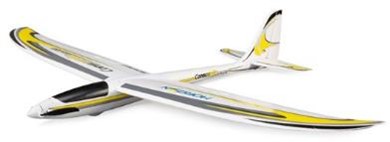
Conscendo Evolution from Horizon Hobby ($230)
For something more conventional Sig offers their Riser kit. This is a 100-inch span model and is an excellent first sailplane. Kit price is $67 plus covering and glue. You’ll need to add a hi-start for launching.
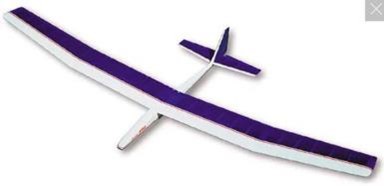
100-inch Span Sig Riser
Club member, Sam Pendelton, sells a Tetra kit that that is winning a lot of RMSA events. This is a 2-meter electric-powered model that gets high praise for its excellent thermaling properties and builds nicely. Contact Sam for current pricing.
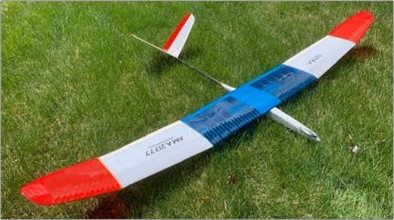
2-meter Electric Powered Tetra
Other online suppliers, such as Hyperflight, offer a wide range of sailplane kits and ARFs. Take a look at those offerings especially the 1 ½, 2 and 2 ½ meter models. They typically run in the $200-$500 range.
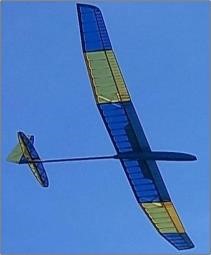
Polires ARF – Electric & Hi-Start Versions
Experienced modelers may prefer scratch-building. Plans are available online for many excellent sailplanes of bygone eras for which kits are no longer produced. If you have a favorite sailplane and enjoy a building project, give it a go!
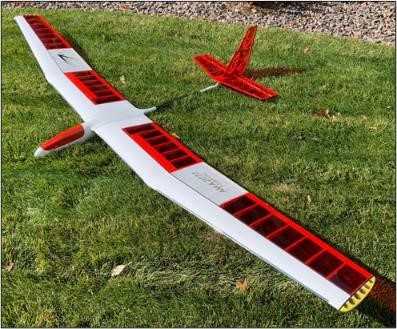
100-inch Legionair Scratch-Build
Of course, you'll want to join the Rocky Mountain Soaring Association on this website. Membership to the Academy of Model Aeronautics (AMA) is also required for all flying RMSA members. You can find an AMA application inside every issue of "Model Aviation" magazine. Some hobby shops have AMA applications, or join online.
If any of this sounds like fun, it is! Come fly with us.
Thanks for using the
RMSA electronic signup process. This process allows you to send your
application to the RMSA Membership Coordinator electronically. In addition it allows
you to also pay electronically using the PAYPAL service. Rocky Mountain Soaring Association Advancement to the next class requires the following:
In all cases there must be at least three competitors in your class to be counted towards advancement points. No class points are carried forward at advancement, however class points are carried forward to the next contest year.
For Discus Launched class year-end standings will be calculated using each pilot's scores from the official club contests. One "major" non-club contest score may be substituted for a club contest score. A pilot's final season score is determined by adding up their 6 highest scores for all club contests, and his 1 requested substitution.
The RMSA club champion shall be recognized as a true champion pilot, showing both skills as a pilot and the willingness to compete against his peers inside and outside of RMSA. Points for the club champion trophy shall be computed from the total of the normalized, documented scores from all RMSA normally scheduled contests entered during the year by that competitor. Normalized points from outside contests must be documented, and submitted to the club scorekeeper prior to November 15 for that contest year. Advancements to the next class shall occur at the end of a contest year and are effective for the following contest season. In the event of a tie for any standings, co-champions will be declared.
Contact Us
dcytry@hotmail.com
bpedersn@colomail.com
bbmw@comcast.net
degroot@ibm.com
judcaissons@gmail.com
johnjonke@aol.com
miller@uasusa.com
jim@monacocasa.com
Howard4113@msn.com
Our Leadership
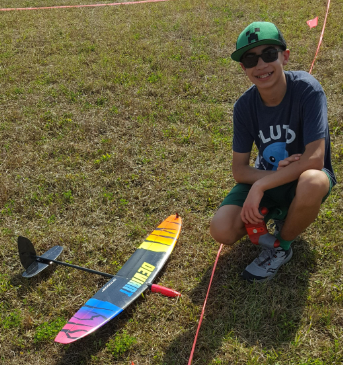
Oscar Cytrynowicz
President
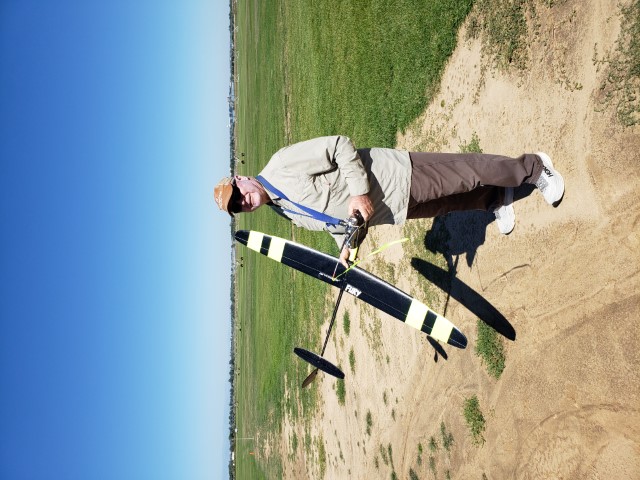
Bob Pederson
Vice President
Bill Beamer
Treasurer
Jim DeGroot
Secretary

Become a Member, or Renew
c/o Bill Beamer
814 Jacques Way
Erie CO 80516
Make checks payable to: RMSA Welcome to RMSA!
Club Contest Program
PURPOSE
RMSA CONTESTS
RMSA usually schedules at least one contest per month, March through November. Tasks are chosen to provide variety and challenge for all skill levels. At the beginning of each year, the Board of Directors normally schedules nine regular monthly contests to be counted toward Open class season points. The Board or individual contest directors may from time to time also request or schedule additional specialty contests. All AMA/RMSA sanctioned Open class unrestricted contests will count toward season point totals and awards. In order for an open class contest to count for season points it must have at least 4 pilots. If an insufficient number of pilots is determined the contest must be rescheduled. If the original CD cannot accomodate the new date, the board shall be given the responsibility to find an alternate CD. If no alternate CD can be determined, the board will cancel the contest. The contest must have at least 4 rounds.
RMSA also schedules at least 9 contests for Discus Launch Glider class for DLG season championship points. A contest must consist of a minimum of 4 rounds, and must consist of at least 4 pilots. Tasks for the contest must be drawn from the official FAI F3K task list. A CD may draw upon any of those tasks to fill out the contest's rounds. The contests will follow official F3K rules for all aspects, unless otherwise stated by the CD at the pilots' meeting. F3K rules will also be followed with respect to throwout rounds.
RMSA may also conduct season awards programs for other classes of events such as 2-Meter, F3-RES and Rudder/Elevator/Spoiler classes as determined by the Board of Directors at the beginning of each season. Specialty contests, fun flys, etc. are non-point events.
NON-RMSA CONTESTS
The Colorado Challenge Cup is normally held in the September timeframe and sanctioned by the club holding the cup for the year and is a counting event regardless of the club holding the event. The Challenge Cup is considered an Open class event.
F5J in the Rockies is RMSA Sponsored 2-day event and is considered a national events and may be counted as a national contest.
To encourage AMA members to participate in national level competitions, any national contest spanning two or more days with 30 or more contestants may be counted towards season total points.
Contests must be of a class compatible with the RMSA class they will be counted against, e.g. Open Thermal Duration (including F3J and F3B) for the RMSA Open class, or DLG for the RMSA DLG title.
NO MORE THAN ONE NON-RMSA CONTEST CAN BE COUNTED TOWARDS SEASON POINTS TOTALS!!
CLASSES
New Member Classification
At RMSA contests, all members are expected to identify themselves as novice, sportsman or masters pilots based on the above guidelines. New members should elect to place themselves in the Sportsman class if they are accomplished RC pilots (power or glider) or have had significant prior contest experience. The Novice class is intended to encourage new flyers to enter the club contests. New members with vast contest experience may petition the Board to be placed directly into the Master class.
Reclassification
Members may petition the board for consideration of changing classification either up or down based on extenuating circumstances. The board will examine the merits of the petition and make a recommendation based on fairness to the member and other competitors.
Scoring
All club contests will be normalized to 1000 points. For contests that have a preliminary and final stages, only the normalized preliminary scores will be used for contest season points.
ADVANCEMENT
Class points are given as follows;
STANDINGS
Normalized scores from each contest will be used to develop advancement points and annual awards. Annual awards shall be given at least through third place in each class. Only the six best Open contests are counted towards annual Open points. In addition, only one of the special noted contests may be counted toward the six best.
Club Bylaws
Article 1
Objectives
Section 1
To promote the building, sport flying, and competition flying of radio controlled model sailplanes.
Section 2
To conform to the general policies of the Academy of Model Aeronautics (AMA), Washington, D.C., and their regulations governing model sailplane flying and contests as per current AMA rule book.
Section 3
To aid insofar as practicable the national program of AMA with a view towards advancement of model aviation in all its phases in the United States.
Article 2
AMA Charter
Section 1
The Rocky Mountain Soaring Association is an AMA chartered club and all members of the club must also be members of the AMA.
Article 3
Election of officers and their duties
Section 1 - Election
Election of Officers shall be held at the first meeting in October. Nominations shall be made by a committee appointed by the President for that purpose and shall be presented at the first meeting in September. Nominating committee shall consist of two board members and two senior members. Nominations will additionally be accepted from the floor at the first meeting in October. Any member who receives a majority of votes cast (providing a quorum is present) shall be deemed to be elected.
Section 2 - Officers Term
All officers shall serve for one year beginning with the first meeting in December and ending with the meeting in November. The President and Vice President shall not be eligible to succeed themselves for more than two consecutive years.
Section 3 - Officers and their duties
A. President - the President shall:
1. Preside at all club meetings.
2. Act as spokesperson for the club in all matters pertaining to club business.
3. Appoint all special committees.
4. Appoint a nominating committee.
B. Vice President - the Vice President shall:
1. Act in all matters for the President when the President is unable to serve.
2. Act as parliamentarian at all club meetings providing official interpretation of the constitution and by-laws as required.
C. Secretary - the Secretary shall:
1. Keep attendance at all club meetings and Board of Directors meetings.
2. Provide written minutes of said meetings as an official record of this club paying particular attention to details of motions and seconds which are duly passed.
3. Append a written copy of all said documents to the official copy of the constitution and by-laws.
D. Treasurer - the Treasurer shall:
1. Collect all monies due the club.
2. Keep a record of all monies received or disbursed.
3. Safeguard the assets of the club at all times.
4. Make his book available for inspection by any qualified member of the club to be appointed by the President.
5. Notify members in arrears in dues.
6. The Treasurer and other officers will be authorized to make financial transactions.
Section 4 - Board of Directors
Consists of all four elected officers and the immediate Past-President and is empowered to establish the basic policies of this club. It will take all necessary steps to implement this policy subject to subsequent approval by the membership in the event there is a specific objection by an active club member.
Section 5 - Vacancy
Any vacancy during the year will be filled by appointment of any active member by the Board of Directors. Said appointment shall serve until the next annual election.
Article 4
Membership
Section 1 - Member
A member shall be defined as anyone having an interest in radio controlled sailplane flying and who has met the qualifications prescribed in this article.
Section 2 - Active Member
A. has been accepted for membership.
B. is current in payment of club dues.
C. is current in payment of club assessments.
D. holds current AMA membership.
Section 3 - Class of Membership
A. Senior - active member 17 years of age or older.
B. Junior - active member 16 years of age or younger.
C. Family - any active member with a member or members of immediate family also being club members under his or her membership.
D. Inactive - former active member who desires this status and is granted approval by the Board of Directors. This is a non-dues-paying status.
Section 4 - New Member
Any person qualifying under Section 1 may apply for membership after complying with the following:
A. Submit an application for membership.
B. Agree that if accepted he will pay all fees for the current year.
C. Either have a current AMA membership or agree to immediately apply for AMA membership.
Section 5 - Expulsion for Membership
A member may be dropped from the club when in the opinion of the Board of Directors he does not continue to meet the prescribed qualifications for membership or does not adhere to club regulations.
Article 5
Meetings
Section 1 - Quorum
For the purpose of conducting club business at a regular, special or election meeting, at least 8 (eight) members must be present, defined as a quorum. For Board of Directors meetings, the President or Vice President and at least 2 (two) other officers must be present.
Section 2 - Regular Meetings
Times and places for regular meetings are to be determined by the President. Special meetings may be called for by either the President or members. Notice of regular meetings shall be mailed when possible.
Section 3 - Voting
All voting on issues involving the 2/3 vote of members present must be by closed ballot. All other issues are to be by show of hands.
Section 4 - Elections
Ballot to be included in newsletter at least two weeks before the election meeting. Persons unable to attend may return their ballots by mail.
Article 6
Dues and Assessments
Section 1 - Membership Dues
The membership dues of this club will be set by the Board of Direstors and approved by the membership at the October meeting each year. Dues are payable on December 15 of the preceding year.
Section 2 - Arrears of Dues
An active member two months in arrears of dues shall be notified by the Treasurer. This notification may be through a notice in the newsletter. If the dues are not paid by February 26th, the member may be deleted from the club membership rosters and have all club privileges forfeited.
Section 3 - Assessments
Assessments may be levied on all club members subject to a 2/3 majority vote of active members.
Article 7
Amendments
This constitution and by-laws shall not be changed or amended except as follows: A. To amend this constitution and by-laws, the amendment must be passed by a 2/3 majority vote of members present at the meeting this amendment is proposed. B. Members shall be notified of amendment changes in the newsletter at least one month in advance of voting.
Article 8
Ratification
To be ratified, this constitution and by-laws must be subject to the same conditions and requirements as an amendment above.
Member List
Area Soaring Maps